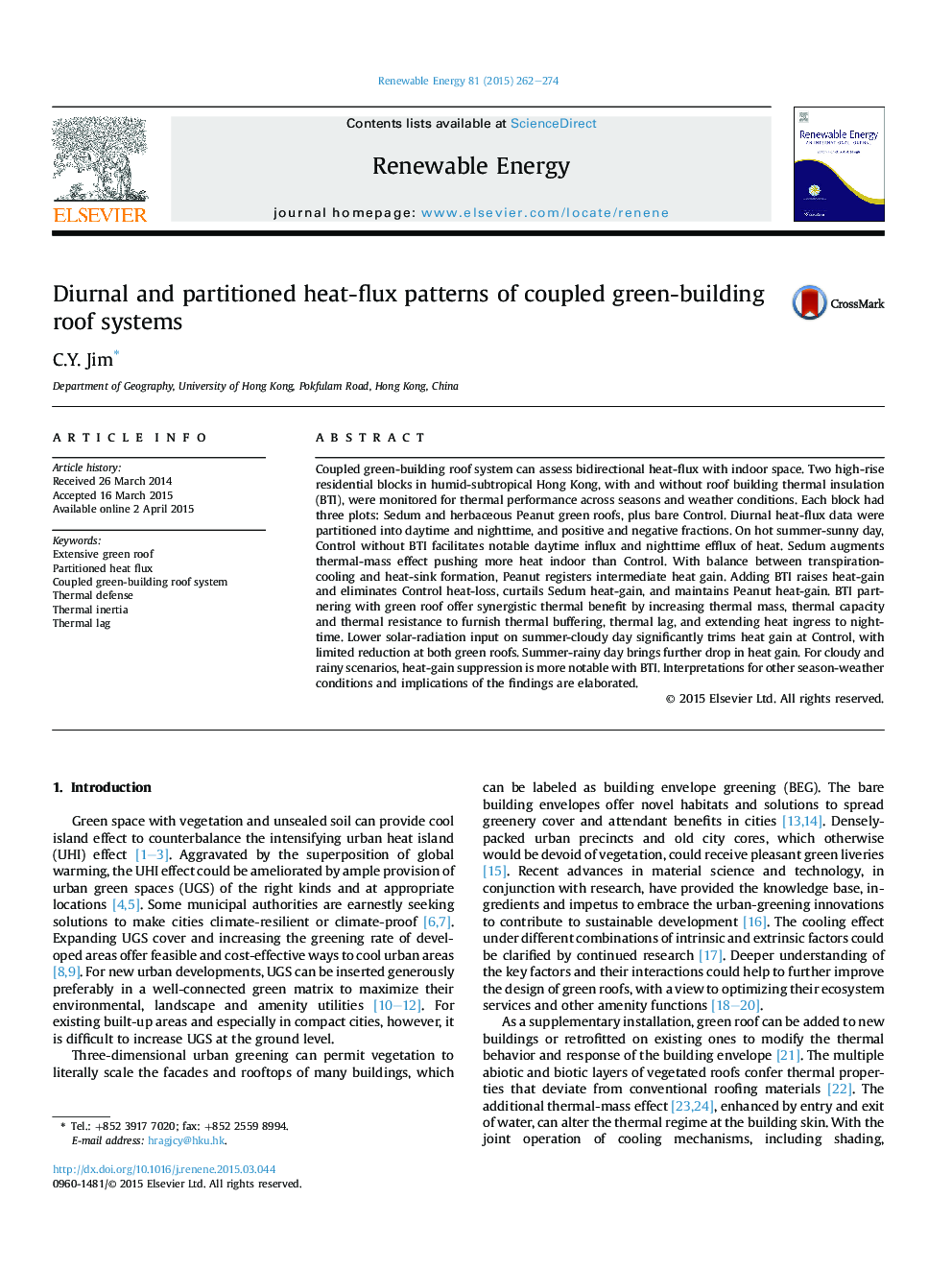| کد مقاله | کد نشریه | سال انتشار | مقاله انگلیسی | نسخه تمام متن |
|---|---|---|---|---|
| 6766987 | 512456 | 2015 | 13 صفحه PDF | دانلود رایگان |
عنوان انگلیسی مقاله ISI
Diurnal and partitioned heat-flux patterns of coupled green-building roof systems
ترجمه فارسی عنوان
الگوهای شیب گرمایی روزانه و تقسیم شده از سیستم های سقف سبز متحرک
دانلود مقاله + سفارش ترجمه
دانلود مقاله ISI انگلیسی
رایگان برای ایرانیان
کلمات کلیدی
سقف سبز گسترده، جریان شار حرارتی، سیستم سقف سبز سازگار، دفاع حرارتی، ناهنجاری حرارتی، تاخیر حرارتی،
موضوعات مرتبط
مهندسی و علوم پایه
مهندسی انرژی
انرژی های تجدید پذیر، توسعه پایدار و محیط زیست
چکیده انگلیسی
Coupled green-building roof system can assess bidirectional heat-flux with indoor space. Two high-rise residential blocks in humid-subtropical Hong Kong, with and without roof building thermal insulation (BTI), were monitored for thermal performance across seasons and weather conditions. Each block had three plots: Sedum and herbaceous Peanut green roofs, plus bare Control. Diurnal heat-flux data were partitioned into daytime and nighttime, and positive and negative fractions. On hot summer-sunny day, Control without BTI facilitates notable daytime influx and nighttime efflux of heat. Sedum augments thermal-mass effect pushing more heat indoor than Control. With balance between transpiration-cooling and heat-sink formation, Peanut registers intermediate heat gain. Adding BTI raises heat-gain and eliminates Control heat-loss, curtails Sedum heat-gain, and maintains Peanut heat-gain. BTI partnering with green roof offer synergistic thermal benefit by increasing thermal mass, thermal capacity and thermal resistance to furnish thermal buffering, thermal lag, and extending heat ingress to nighttime. Lower solar-radiation input on summer-cloudy day significantly trims heat gain at Control, with limited reduction at both green roofs. Summer-rainy day brings further drop in heat gain. For cloudy and rainy scenarios, heat-gain suppression is more notable with BTI. Interpretations for other season-weather conditions and implications of the findings are elaborated.
ناشر
Database: Elsevier - ScienceDirect (ساینس دایرکت)
Journal: Renewable Energy - Volume 81, September 2015, Pages 262-274
Journal: Renewable Energy - Volume 81, September 2015, Pages 262-274
نویسندگان
C.Y. Jim,
